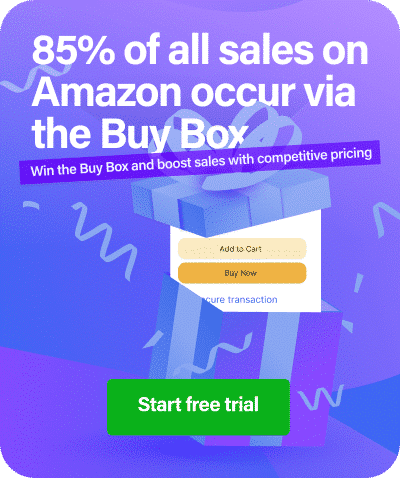Are you an eCommerce seller who cringes at the thought of writing another blog post? Then this one’s for you. While everyone’s telling you to “start a blog,” there’s a whole world of content marketing opportunities that don’t require you to be the next Hemingway.
The simple truth is this: Some of the most effective content marketing strategies for eCommerce have nothing to do with traditional writing at all.
The content marketing landscape has evolved dramatically in recent years:
- 89% of businesses use video marketing
- 93% report it drives positive ROI
- And of the remaining businesses, 68% said they planned to start using it in 2025.
And even more importantly for eCommerce sellers, shoppers are nearly 2.5x more likely to say user-generated content (UGC) is more authentic than brand-created content.
With that in mind let’s explore five winning content marketing strategies that go beyond the keyboard and tap into what’s actually driving sales in 2025.
In each case, we’ll walk you through the tools that make it easy to get started, the workflow to keep it sustainable, and a real success story to show what’s possible.
1. Video marketing: The visual storytelling powerhouse
Once just a trendy add-on, video marketing is now essential. 87% of marketers say video has a direct, positive impact on sales, and 89% of consumers say they want more video content from brands in 2024. For eCommerce brands, video marketing offers incredible versatility without requiring extensive writing skills.
Simple video content ideas for eCommerce:
- Product demonstrations: Show your products in action
- Unboxing experiences: Let customers see what they’ll receive
- Behind-the-scenes content: Share your brand story visually
- Customer testimonials: Let satisfied customers do the talking
Tools to get started:
- Loom: Perfect for quick screen recordings and product demos
- Canva Video: User-friendly templates for social media videos
- InShot: Mobile app for editing product videos on the go
- Vidyard: Professional video hosting with analytics
Workflow:
- Plan your video content calendar (weekly themes work well)
- Film 3-4 short videos in one session
- Edit using simple templates
- Schedule across your social platforms
- Repurpose content for different channels
Success story: Dollar Shave Club revolutionized their industry with a single viral video that cost $4,500 to produce but generated millions in sales. Their approach? Humor, authenticity, and clear product demonstration. No fancy production required.
Once you’ve mastered the visual punch of videos, how about bringing your brand to life through the power of conversation?
2. Podcasting: Building community through conversations
Podcasting might seem intimidating, but it’s essentially having conversations about topics you’re already passionate about. Email marketing ROI remains high, delivering an average ROI of $42 for every $1 spent, but podcasting creates deeper relationships that can drive even higher lifetime customer value.
Podcast content formats for eCommerce:
- Industry interviews: Chat with suppliers, customers, or fellow entrepreneurs
- Product stories: Share the journey behind your products
- Customer success stories: Let customers share their experiences
- Industry insights: Discuss trends in your niche
Essential tools:
- Anchor: Free podcast hosting and distribution
- Audacity: Free audio editing software
- Zoom: For remote interviews
- Rev: Affordable transcription services
Simple workflow:
- Choose a consistent release schedule (monthly is fine to start)
- Create a simple interview template
- Record 30-45-minute conversations
- Edit for clarity (don’t aim for perfection)
- Distribute and promote through your existing channels
Success story: The founder of Beardbrand built a multi-million dollar grooming company largely through podcasting. Eric Bandholz used his podcast to establish authority in the men’s grooming space, building brand awareness and trust that translated directly into sales.
But as well as speaking to customers, have you given thought to letting your customers speak for you? If not, pay close attention to this next strategy.
3. User-generated content: Let your customers be your marketing team
This is where the magic happens for eCommerce brands. 60% of consumers believe UGC is the most authentic marketing content, and brands using UGC see 29% more web conversions than campaigns without UGC. And the best part? Your customers create the content for you.
UGC strategies that drive sales:
Customer photo campaigns. Encourage customers to share photos using your products. 28% of eCommerce marketers believe Instagram generates the most engaging user-generated content.
Review and testimonial programs. 71% of shoppers agree that the number of product reviews is more important depending on how expensive the product is.
Social proof integration. 85% of shoppers consult online product reviews on their phones whilst shopping in-store.
Tools for UGC management:
- Later Influence: Track and collect user-generated content
- Yotpo: Comprehensive review and UGC platform
- Pixlee: UGC marketing platform with AI-powered discovery
- Bazaarvoice: Enterprise-level review and UGC solutions
- Billo – UGC creator marketplace for video ads
UGC collection workflow:
- Create branded hashtags for your products
- Incentivize sharing with contests or discounts
- Monitor mentions and tags across platforms
- Request permission to reuse content
- Feature UGC on product pages and social channels
Success story: Fashion brand Reformation built their entire content strategy around UGC. They encourage customers to share photos wearing their clothes, then feature this content prominently on their website and social media. This approach has helped them build massive brand awareness and social proof without a traditional content team.
For more ideas on structuring your visual content, check out how to Structure Your Amazon Image Gallery for maximum conversion.
The previous two strategies have given a lot of time to words. So, what about when you need your ideas, stats, or instructions to stand out visually?
4. Infographics: Visual data that sells
Infographics transform complex information into digestible, shareable content. Visual content is 43% more persuasive towards users than just text. For eCommerce brands, infographics can showcase product comparisons, how-to guides, or industry insights without requiring strong writing skills.
Infographic ideas for eCommerce
- Product comparison charts
- Size guides and fitting instructions
- Usage statistics and benefits
- Industry trend summaries
- Step-by-step tutorials
Design tools:
- Canva: Templates and drag-and-drop design
- Piktochart: Specialized infographic creation
- Venngage: Professional templates with data visualization
- Adobe Express: Quick infographic templates
Creation process:
- Identify key data or information to visualize
- Choose appropriate template and color scheme
- Keep text minimal and highly readable
- Include your branding consistently
- Optimize for different platform sizes
Success story: Home improvement retailer giant Home Depot uses infographics extensively to break down complex DIY projects into simple, visual steps. These infographics get shared widely on Pinterest and drive significant traffic to their product pages.
Once you’ve caught people’s attention, it’s time to convert interest into action. That’s where the next strategy can turn browsers into buyers.
5. Lead magnets: Value-driven content that converts
A lead magnet is a valuable resource (like an ebook, checklist, template, or webinar) that you offer for free in exchange for a visitor’s contact information, typically their email address.
73% of B2B marketers say content marketing (particularly blogs and white papers) is the most effective strategy for boosting leads and sales. The key is creating something genuinely useful that solves a real problem for your target audience.
Top lead magnet formats:
- Product guides and sizing charts
- Checklists and templates
- Video tutorials or mini-courses
- Industry reports or trend summaries
- Discount codes with exclusive access
Tools for lead magnet creation and distribution:
- ConvertKit: Email marketing with landing page builder
- Mailchimp: All-in-one marketing platform
- Leadpages: Landing page creation software
- Typeform: Interactive forms and surveys
Lead magnet strategy:
- Identify your audience’s biggest pain points
- Create a resource that provides immediate value
- Design a compelling landing page
- Promote through your existing channels
- Follow up with valuable email sequences
Success story: Skincare brand Glossier built its email list by offering skincare guides and routine recommendations. These lead magnets helped them understand customer preferences while building a community that drove word-of-mouth marketing and repeat purchases.
When creating product descriptions that convert, learn how to write an Amazon product description that captures attention and drives sales.
Done! That’s the supreme squad of marketing strategies covered one by one. But what does it look like to bring them all together into a plan that’ll take your brand forward?
Building your content marketing strategy
The beauty of these approaches is that they’re all interconnected.
What do we mean by that? Well, your customer photos can become social proof in your email campaigns. Your podcast conversations can generate quotes for infographics. Your video content can be repurposed across multiple platforms.
Getting started without overwhelm:
Week 1-2: Choose one format that excites you most
Week 3-4: Create your first piece of content using the tools and workflows above
Week 5-8: Establish a simple, sustainable rhythm
Week 9-12: Add a second content format and look for repurposing opportunities
Key success metrics to track:
- Engagement rates across different content types
- Traffic generation to your product pages
- Email list growth from lead magnets
- Social proof accumulation through UGC
- Community building around your brand
You’re not going to become a content creation machine overnight, but that’s not the goal. This is about finding sustainable ways to connect with your audience, build trust, and drive sales without spending all your time writing blog posts.
Remember, you don’t have to do everything manually. 67% of small business owners and marketers use AI for content marketing or SEO, and you can too. For instance, use AI tools to help come up with ideas, for basic editing, and content optimization while you focus on what you do best: running your business.
If you only remember one thing from this guide…
Content marketing for eCommerce doesn’t have to mean endless blog posts!
You can leverage these five no-blog strategies to build brand awareness, establish social proof, and create viral content that drives real business results.
Just make a start, with the one format that feels the most natural to you. Establish a simple workflow. And gradually build your content ecosystem. And if you want more inspiration, check out our Marketing Archives.
If you’re putting energy into content that resonates, you’ll want pricing that performs just as intelligently.
With 24/7 automated repricing driven by AI, Repricer helps you win the Buy Box, protect your margins, and react instantly to competitor price changes, all without lifting a finger.
See repricing automation in action, with a fast setup, maximum uptime, and a better pricing strategy. Book a Demo to discover how streamlined pricing growth complements your content-first marketing.





